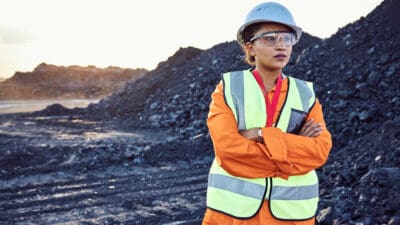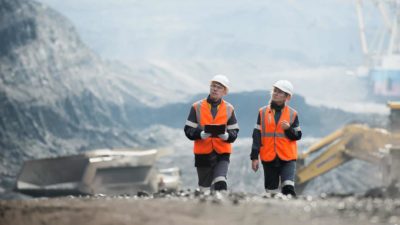The Fortescue Metals Group Limited (ASX: FMG) share price is currently more than triple its previous 10-year high and significantly outperforming its major ASX rivals.
Given they share high iron ore prices but differ majorly in their climate-change targets, this makes now the perfect time to deep dive into Fortescue's share price history.
Fortescue's recent share price information
The Fortescue share price has risen 100% over the past 12 months on the back of strong iron ore prices, but has fallen 10% this month and 18% this calendar year.
In this period, Fortescue has been in the news nearly constantly. Among its 20 ASX company updates so far in 2021, Chair Andrew 'Twiggy' Forrest's environmentally focused Boyer Lectures for the ABC and Fortescue's target for carbon neutrality by 2030 were the stories that broke through into mainstream attention.
For recent context's sake, the Fortescue share price rose 2.13% yesterday to break its monthly downward trend, however hasn't retained those gains today, dropping 1.38% at the time of writing.
With all the ups, downs and news bites considered, we look back at Fortescue's share price over the past few years and the biggest movements that have affected it, to see whether public attitudes towards the company may be having an impact.
How important is climate change to resources investors?
Andrew 'Twiggy' Forrest — who is largely synonymous with Fortescue — and his public environmental focus could be noteworthy, given Fortescue's share price gains are 50% up against its basic materials sector.
At $20 per share, it's important to remember it does have bigger scope for growth.
However, Rio Tinto Limited (ASX: RIO) is also on a 10-year share price high and its share price has almost quadrupled since 2016. But it's still down 20% against the same sector.
Meanwhile, BHP Group Ltd (ASX: BHP), at $45 per share, is currently beating its decade-high set all the way back in March 2011, but by less than $3 per share. It's only 5% up against the sector.
Fortescue share price over time
Fortescue's share price hovered around the $5 mark for the best part of the last decade, never rising above $6.66 until 2019. This is despite the iron ore price being roughly equivalent in 2012 to its price today. Fortescue's share price is now just over $20 per share.
This shows that despite Fortescue being largely reliant on iron ore as a major resources company, it's not the end-all to its share price conversation.
After an initial rise, the iron ore price had dropped back to $82 USD/T by April 2020 but that didn't prevent the Fortescue share price from consistently rising through April and May that year.
While the period from 2010 to 2012 was a boom for iron ore, far exceeding its price today, Fortescue was embattled in a high-profile legal stoush with Indigenous native-title holders, which is an issue the company manages to largely avoid today — unlike some of its competitors — although perhaps that's partly dumb luck.
By 2013, Fortescue had achieved its target of awarding more than $1 billion in contracts to Indigenous businesses. It signposted a shift in public relations for the miner, which is now increasingly well-known for Forrest's environmental focus.
It's also possible that Fortescue's rapid share price rise has a lot to do with the company's commitments to carbon neutrality, the development of hydrogen fuel cells, and its Chair's public statements.
"I hope you're going to remember this evening"
Last Wednesday, Forrest spoke optimistically to the Credit Suisse Asian Investment Conference about how Fortescue are positioned to reap the rewards of a "$12 trillion" Australian hydrogen industry.
I hope you're going to remember this evening as the heralding of massive change, which you can invest in, you can be part of, or you can watch happen around you. But it will happen.
We see the future of energy as hydrogen. I think our greatest natural resource is no longer iron ore, it isn't gold, it isn't oil, and it's certainly not coal.
The question is not whether green hydrogen will become the next global energy form, it's just a question of by whom. …Who will mass produce, have a ship leaving the port every half an hour on a scale of the greatest energy companies in the world?
Which company would be that strong, that we could allocate sufficient risk to test green hydrogen at global industrial scale? Last year the board and I at Fortescue Metals Group decided that would be Fortescue.
Fortescue dividends a greater appeal?
Fortescue offers a dividend of 12.3%, which fully franked grosses up to over 17%. This symbolises the company's strong track record, with its share price rising more than 680% over the past five years. Fortescue calculates its dividends based on a ratio of 50% to 80% of full-year net profits after tax (NPAT).
Its publicly secure status as a blue-chip share and high-profile ASX 200 Index company complements its dividends and can appeal to retiree investors. It's impossible to discuss the Fortescue growth without keeping these facts front and centre.
The Fortescue future
But what will become another stone cold fact in time, is how important carbon-reduction targets are to investors.
BHP's target of a 30% drop in emissions by 2030 and Rio's target of 15% (with carbon intensity of 30%) pale compared to Fortescue's.
If Twiggy and co appear on track to reach their targets, this question may be answered a lot sooner than 2030.






